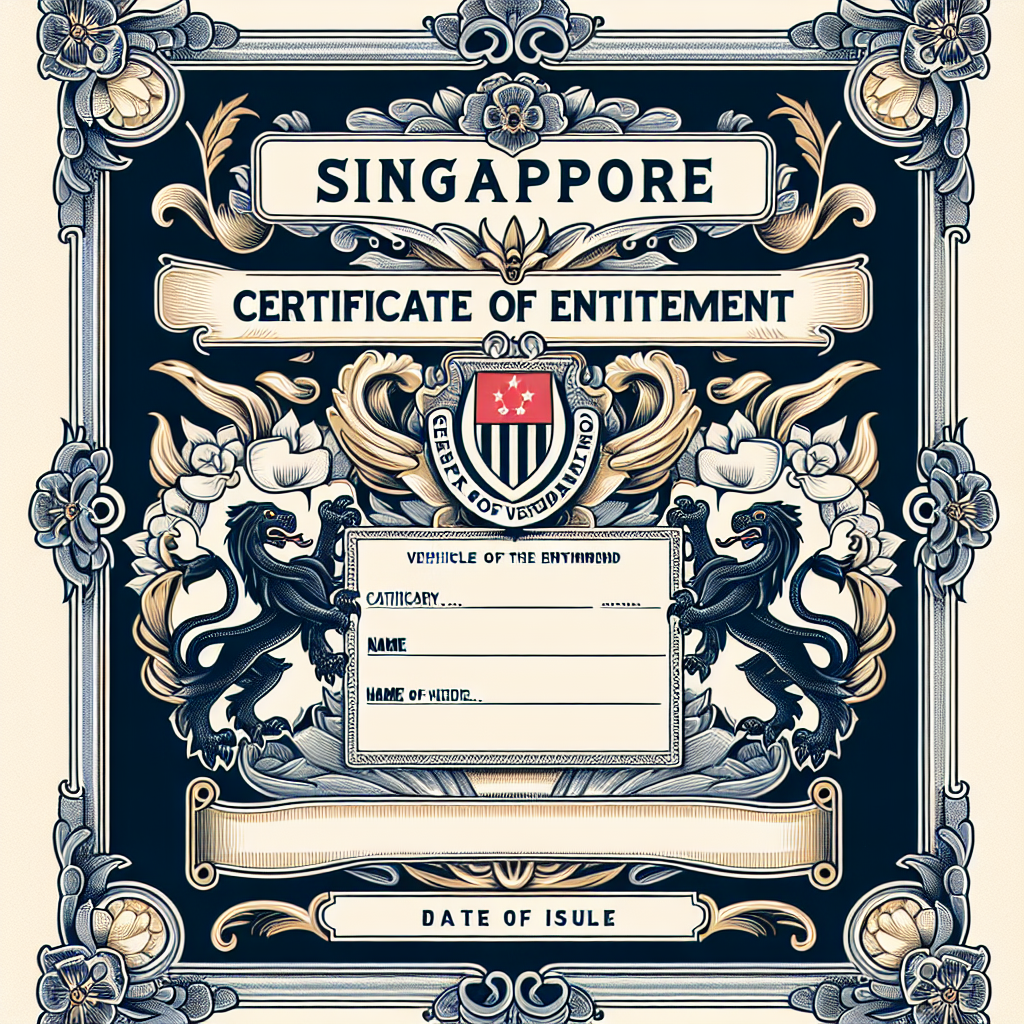Singapore, a country admired for its effective approach in managing vehicular population, has a unique and intriguing system dubbed as the Certificate of Entitlement (COE). As an integral part of the country’s mechanism, it has created a significant impact in fostering its automotive industry. Understand how this tool works to usher in a significant era of efficient reinvention in transforming industries.
COE in a Nutshell
The Certificate of Entitlement (COE) is an integral part of vehicle ownership in Singapore. Owning vehicles in the city-state introduces one to the ubiquitous concept of COE. In essence, COE is a form of license received after a successful bid which grants individuals the legal right to register, own, and use a vehicle in Singapore for a decade.
Issued by the Land Transport Authority, this certificate aims to control the number of active vehicles on the roads of the city-state to avoid excessive traffic congestion and environmental pollution. Without the COE, one would not be legally allowed to operate a vehicle within this city-state. It is more than just a document; it’s a unique system of regulation designed to safeguard the functionality of Singapore’s transport infrastructure.
The Process of Procurement: Open Bidding System
The procurement process for COE is far from simple; it does not simply involve a straightforward purchase. Open bidding exercises, conducted twice a month by the Land Transport Authority, releases these coveted certificates. This system ensures utmost transparency and competitiveness, as each individual bids against one another for the limited number of COE available. It guarantees fair competition, thereby preventing monopolistic tendencies and encourages everyone to participate in the auction. The feeling is not dissimilar to that of winning a lottery – it underpins the right to own a vehicle in Singapore.
COE and its Market Dynamics
Delving into the economics of COE, the mechanism behind its pricing is primarily demand and supply. Like any other commodity in the market, the price of COE fluctuates in response to changes in demand and supply. By examining the COE prices over the last three months, kinetic trends can be identified. Fluctuating price ranges reveal the changing demands and propagation of different vehicle segments. This real-time market analysis not only gives insights into the popular choices for vehicles but also provides a fair understanding of how the market dynamics influence COE prices.
Vehicle Quota System: Balancing the Equation
A key factor in this unique regulatory structure is the Vehicle Quota System (VQS), which has been instituted to manage the traffic condition, environmental concerns, and overall vehicular growth. In essence, the VQS determines how many new vehicles are allowed to be registered within Singapore. This innovative approach to controlling vehicular population growth ensures that the city’s traffic doesn’t exceed its road carrying capacity, simultaneously striking a balance between satisfying individual mobility needs and preserving the environmental quality.
Decoding the Evolutionary Leap: The COE Revolution
From facilitating fair vehicle ownership to limiting the number of vehicles, the COE system, along with the VQS, is an ingenious solution to managing urban mobility. It undoubtedly plays an instrumental role in transforming industries through efficient reinvention. Thus, getting accustomed to the COE and VQS can help us envision the future trajectory of the automotive world and its potential impact within Singapore.


brilliantly unveils the dynamic landscape of Singapore’s automotive realm, offering a glimpse into its future. A captivating read that navigates through the intricacies of COE policies and their impact on the automotive industry.
The COE system in Singapore is indeed intriguing. I find it impressive how the government has implemented a mechanism to control the number of vehicles on the road, reducing congestion and pollution. It’s a model worth studying for other cities.
Thank you for your thoughtful comment, Rahul! We’re thrilled to hear that the COE system in Singapore has caught your attention. It’s indeed a unique and effective mechanism that has made significant strides in managing vehicular population and reducing congestion and pollution. As you’ve mentioned, it’s definitely a model worth studying for other cities. At SpeedZone, we’re always eager to learn from innovative solutions like the COE system. If you have any questions or would like to know more about how this system works, please don’t hesitate to contact us at +65 6225 6225 or email us at [email protected]. We’d be happy to help.
I’m surprised that Singapore allows bidding for COEs! It adds an element of excitement to the process, but I can also see how it might create more competition. Overall, I think the COE system is a clever way to manage vehicle ownership and reduce congestion.
Hi Yvonne, thanks for sharing your thoughts on Singapore’s Certificate of Entitlement (COE) system! You’re right, the bidding process can add an element of excitement to the process, but it also ensures that there’s a fair and competitive mechanism in place. We’re glad you think the COE system is clever – we agree that it’s an effective way to manage vehicle ownership and reduce congestion on our roads. If you have any more questions or would like to know more about how the COE system works, feel free to reach out to us at +65 6225 6225 or [email protected].
I’m fascinated by Singapore’s innovative approach to managing vehicular population. The Certificate of Entitlement (COE) system is a game-changer, ensuring that the city-state’s transport infrastructure remains efficient and sustainable.
Thank you for sharing your enthusiasm about Singapore’s innovative approach to managing vehicular population, Aisha! The Certificate of Entitlement (COE) system is indeed a unique and effective way to ensure the country’s transport infrastructure remains efficient and sustainable. Our team at Speedzone has extensive knowledge of the COE process and can guide you through it. If you have any questions or would like to learn more about our services, please don’t hesitate to contact us at +65 6225 6225 or [email protected]. We’re always here to help.